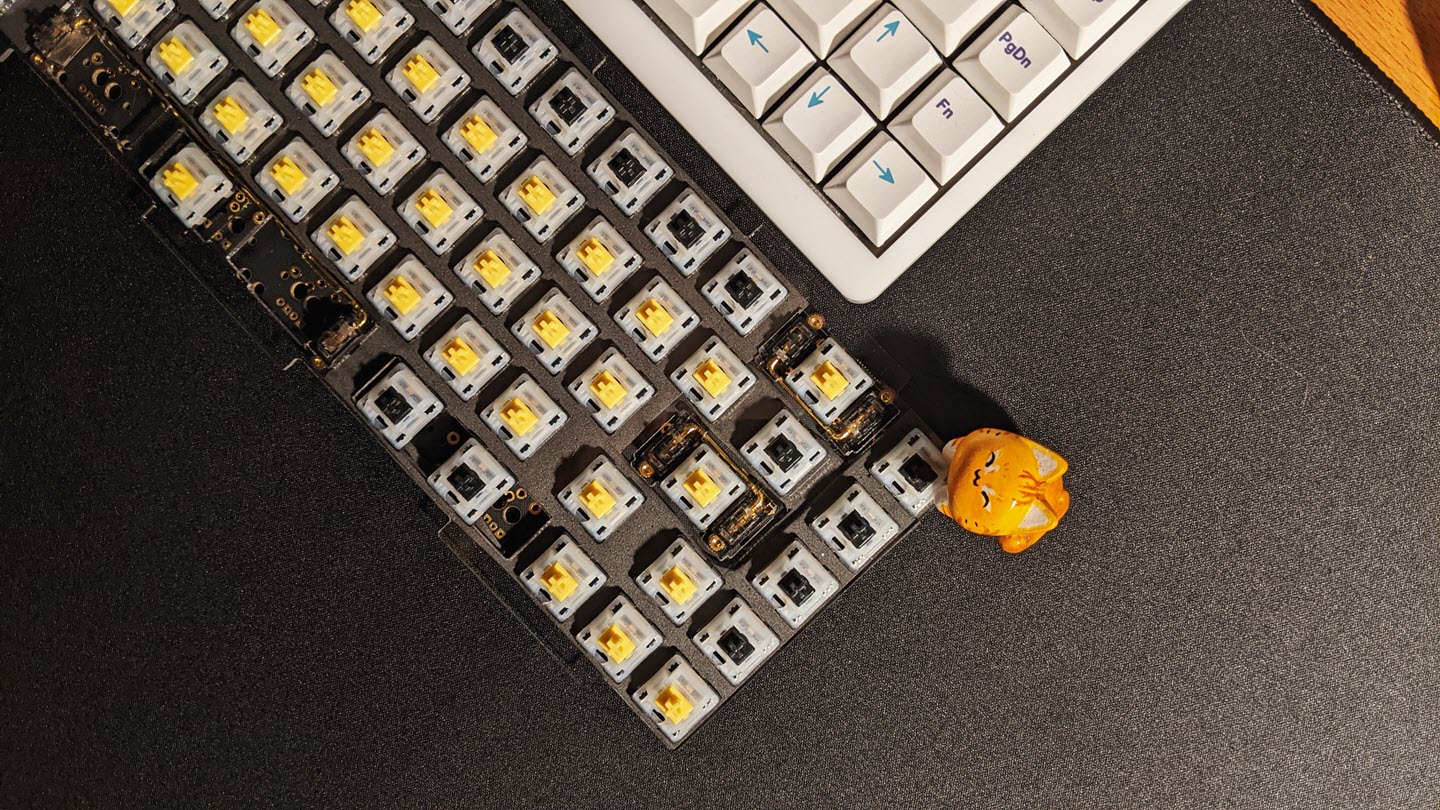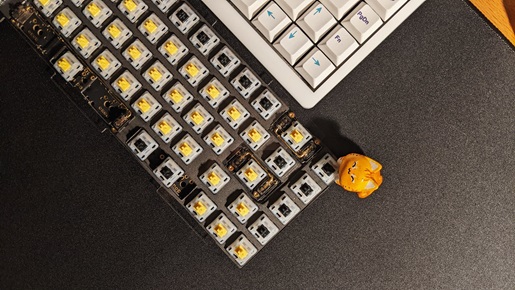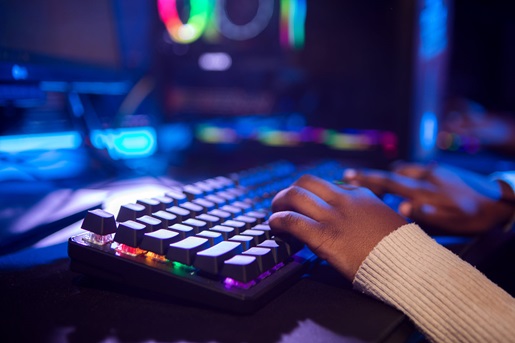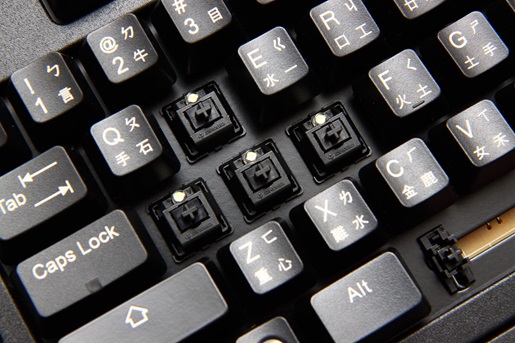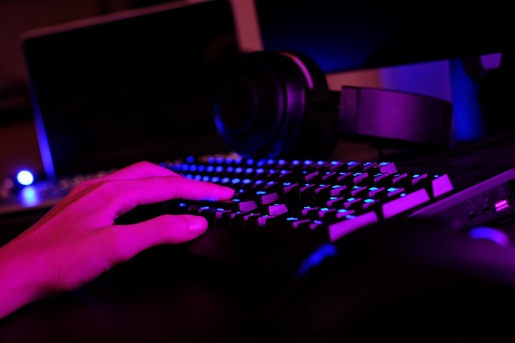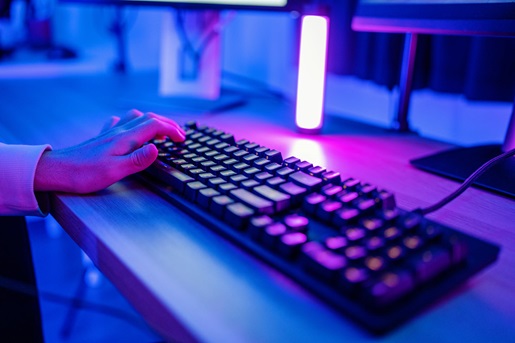These are the most important characteristics to keep in mind as you hunt for different mechanical keyboard switches
The mechanical keyboard hobby is a place of endless tinkering, where enthusiasts experiment with combinations of components in pursuit of their preferred look, feel, and sound. Every piece of a keyboard, from the base to the circuit board to the keycaps, influences the kind of typing experience it creates. But nothing presents more possibilities for finding just the right fit than the difference between mechanical keyboard switches.
If you aren’t already in deep with the rest of us mechanical keyboard fiends, you’d be forgiven for not quite understanding why there need to be dozens upon dozens of different mechanical keyboard switches from a plethora of brands. But you will by the time you’re done reading this article. And beware: We will be including examples, so you may be tempted to pick up a few sets to feel the difference in your own setup. Nobody ever said all your switches had to be the same kind…
What different types of mechanical keyboard switches are there?
The different kinds of mechanical keyboard switches available on the market today could easily be overwhelming for all but the most seasoned enthusiasts to consider side-by-side. Fortunately, most of the switches available on the market today can be sorted into one of three broad categories.
- Linear switches press down smoothly from top to bottom, allowing for fast and near-silent operation but making it more difficult to tell when a keypress will register.
- Clicky switches are so named for the audible click and tactile bump they yield just before their actuation point, which is when the keypress signal is sent to the computer.
- Tactile switches operate much like clicky switches, but with a more subdued sound. They offer a middle ground between the quiet efficiency of linear switches and the satisfying sensory experience of clicky switches.
Note that these categories apply to MX-style switches, which have become the most common type of switch on the market thanks to their broad cross-compatibility. We go even deeper into the similarities, differences, and main use cases of these categories in our guide to the 3 Types of Mechanical Keyboard Switches Explained.
Did You Know?: You can read our guide to 7 Wild Keycap Styles for Your Next Custom Build to find the perfect pairing for your new switches.
What makes the difference between mechanical keyboard switches?
If you ask a hundred mechanical keyboard fans what the most important difference between mechanical keyboard switches is, you’ll likely get a hundred different answers (which, if you ask us, is part of what makes this hobby so appealing). But in the interest of being a little more easily digestible, we’ve broken down six common characteristics that make the biggest difference in mechanical keyboard switches.
Weight
Weight determines how much pressure must be applied to a switch for the keyboard to detect a keypress and is commonly measured in grams (or in Newtons when given as actuation force). A lighter-weight switch can be pressed with less physical effort, meaning it will be faster to type on but also more likely to pick up errant presses from misplaced fingers. A heavier switch such as a Cherry MX Green will require more force to activate, which may cause greater fatigue in your fingers — but many hard-typing power users would settle for nothing less.
Sound
The sound a keyboard switch makes when you press it may seem like a trivial concern, but there’s a reason keyboard lovers talk about it so much. Think about how many keypresses you do in any given day. We’re already at about 3,000 just in the course of writing this article. If you’re going to hear a sound thousands of times each day, you may as well enjoy it, right? Some switches slide noiselessly, others clack, the mythical few “thock” if installed on just the right board and lubricated to perfection. That said, there may be no more iconic sound in the world of mechanical keyboards than the crisp, bright click of a Cherry MX Blue.
Tactility
If you’re going to press something thousands of times each day, it should feel as good as it sounds. Tactility as a concept refers to the general sense of perceiving pressure via touch, but in the mechanical keyboard lexicon it means whether there’s a “bump” in the travel of the switch — and if so, what that bump feels like. The bump could be a sudden but brief dip after light pressure is applied, or a bigger drop that only occurs when you’re close to bottoming out, or anything in between and beyond. Tactility is perhaps the most inscrutable of mechanical keyboard switch differences, but many happy reviewers have praised the large, round bump of Holy Panda X switches.
Did You Know?: A full range of accessories for your HHKB help make your next favorite board an even more indispensable part of your setup.
Actuation point
It sounds like the most technical of mechanical keyboard switch differences, but it’s actually super simple: the actuation point is the spot in the travel of the switch where it sends a signal to your computer that you just hit (and are possibly holding down) a key. A high actuation point on a switch means you’ll barely need to tap each key to register as your fingers dance across the board, while a low actuation point means you’ll need to decisively press each key down as you march through your paragraph, line of code, or FPS firefight. If you opt for a linear switch like a Cherry MX Red, you won’t even feel the actuation point — which means faster typing, but also less feedback to keep you on the right track. Some keyboards, such as our REALFORCE line, even let you customize the actuation point to suit different tasks and preferences.
Travel distance
This difference between mechanical keyboard switches determines how far a switch moves between its resting position and its fully depressed position, or, in other words, how far it goes before bottoming out. A travel distance of 4 millimeters is fairly common, but some switches built with fast typing in mind keep it shorter; for instance, Kailh Speed Gold switches only have 3.5mm of total travel.
Aesthetics
Though your key switches will likely spend most of their time covered by keycaps, they can still make a profound impact on the look of your keyboard. How is that? Well, if you want to have a cool RGB lighting setup on your board, you’d better make sure your switches have a clear body or built-in window over the LED, lest the light show stop before it ever begins. Halo True switches come with a transparent upper housing, leaving your RGB free to shine through with whatever colors you choose. Meanwhile, if you have a low-profile board, you may be able to see a good amount of the switches peeking out from around the edges — so pick something that fits your style.
Feel and hear the Topre difference
The cross-compatibility of MX-style switches has helped the mechanical keyboard market become the tinkerer’s paradise it is today. But even more splendid sounds and fantastic finger-feels await in switches that go beyond this common category. Topre switches were designed to blend the best parts of mechanical keyboard switches and traditional designs, using electrostatic principles to offer precise and satisfying keypresses (as well as a fan-favorite “thock” sound). There’s no better place to find that unique Topre sound and satisfaction than the high-end line of keyboards from HHKB.

